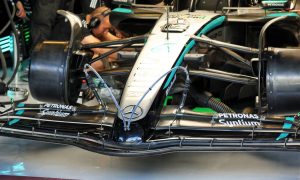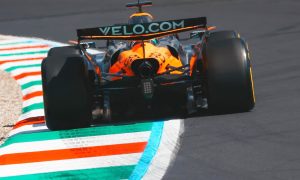
The FIA has revealed plans to introduce a 'push-to-pass' engine power boost for Formula 1 in 2026, allowing drivers to call up a KERS-style boost system which could see drivers reach top speeds of up to 355kmh (220.5mph).
That's similar to to the US IndyCar open wheel series, which already has an existing push-to-pass feature. It marks something of a return to F1’s early experimentation with hybrid power through KERS between 2009 and 2013 before the sport's current hybrid power units were introduced..
Drivers will be able to use it for both offensive and defensive purposes during the race in wheel-to-wheel battle, or alternatively to maximise the performance of the car and to improve lap times.
Article 5.4.8 of the latest 2026 technical regulations draft ready stipulates plans for a new ERS-K system which under standard use could see drivers reach speeds of 345km/h (215mph) from the new turbocharged 1.6-litre V6 internal combustion engine.
But the regulations will result in a reduction in ICE power output, from around 560kW down to 400kW (535bhp), so the FIA is looking to boost the contribution from the battery element to compensate.
Although the existing MGU-H system is being phased out of the new power unit specification to make it simpler and cheaper to design and manufacture, the battery output will see a jump from 150kW to 350kW (470bhp) to compensate.
The system would then feature a second stage boost allowing drivers to access additional power on demand. However, just like in Formula E, this will mean drivers will have to be on top of energy management strategy.
Over-reliance on the override mode would leave the driver at risk of running into an energy deficit under normal deployment leaving them vulnerable to attack until they can sufficiently recharge their battery.
That means it couldn't be used continuously on every lap during the race. But its use wouldn't not be limited to specific areas of the track, as is the case with the current DRS mechanism which helps overtaking in the race.
At this point the 2026 engine regulations are still to be finalised and formally signed off by Formula 1, the governing body, and teams and manufacturers. At this stage the draft does not go into full details of how the system will work.
The move towards the increased use of electrical battery power has been a large part of the appeal bringing Audi and Ford into the sport, alongside existing manufacturers Ferrari, Mercedes, Honda and Renault.
Keep up to date with all the F1 news via Facebook and Twitter







